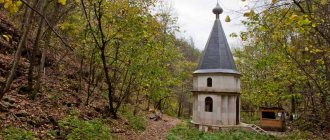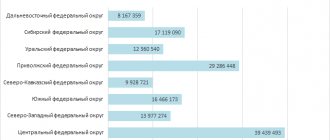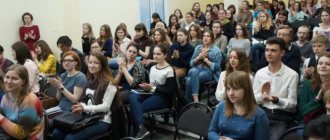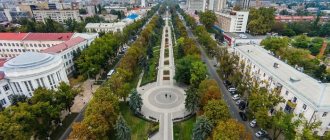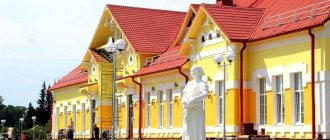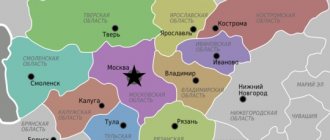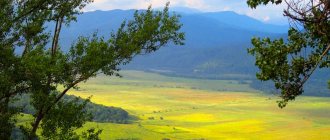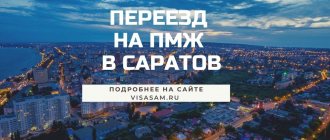The ancient Russian city of Ryazan on the Oka, with its distinctive history and appearance, is a major scientific and industrial center in central Russia. Over its long history, the settlement has gone through different stages; it embodies all the features of Russian life. The population of Ryazan, which is steadily increasing, can generally be considered as a small model of Russia. This city combines unique and typical features and this is what makes it especially interesting.
Geographical position
In the center of the East European Plain, between the great Russian rivers Oka and Volga, is the city of Ryazan, whose population we are considering in the article. The area of the city is 224 square meters. km. The settlement is separated from Moscow by about 180 km. The city is located in a zone of deciduous and coniferous forests and steppes. About 36 hectares of urban areas are occupied by forests. The Ryazan region neighbors such regions as the Moscow, Tula, Vladimir, Lipetsk, Penza, Nizhny Novgorod and Tambov regions, as well as Mordovia. At the same time, Ryazan occupies a very convenient location at the intersection of many transport routes, this has a positive effect on the development of the city. It is located in an area rich in water resources. In addition to the Oka, several rivers of different sizes flow here, the largest of which is Trubezh. The city's topography is predominantly flat, with slight elevation changes.
Climate and ecology
The location of the city in the center of the mainland creates conditions for a temperate continental climate. This means that the city has warm summers and not very harsh winters. The temperature difference between summer and winter reaches 30 degrees. The population of the city (Ryazan has many residents) has adapted well to such changes. The seasons in the region coincide almost exactly with the calendar seasons. Summer begins at the very end of May and ends at the beginning of September. The average temperature in summer is +18 degrees, but the air during the day can warm up to 25 degrees. Average annual temperatures remain around plus 8-9 degrees. Winter begins at the end of November and ends at the end of March. On average in January the thermometer shows about minus 9 degrees.
The region receives quite a lot of precipitation (540 mm), the rainiest months are July and August, and the most snowfall occurs in January-February. Snow cover sets in in the city at the end of November. The sun shines in Ryazan for about 1900 hours a year.
Ecology in the city is a rather acute problem. Industrial enterprises, especially the chemical industry, pollute the air and water of Oka. The abundance of transport also contributes. Therefore, in some areas, such as Khimvolokno, Southern industrial center, large amounts of harmful substances are found in the air. Therefore, the population of Ryazan prefers to live closer to forested areas, for example, in the Meshchersky forests area in the north of the city.
Migration
As for the migration situation, today it looks like this:
- In 2022, the total population in the region, and not just in the city, increased by 905 people. These figures relate exclusively to external migration, that is, when people come from other countries or leave for other states.
- As for intra-Russian movement, over the same calendar period, 15,481 people arrived in the region, and 16,733 left.
- Thus, we can conclude that the region is losing its citizens due to the fact that they are looking for more promising places to live. In addition, the closest accessibility in terms of distance is Moscow and the Moscow region. And the prospects here for the country’s citizens are higher, which most likely causes internal migration outflow within the state.
City `s history
The oldest human settlements on the territory of modern Ryazan date back to the Paleolithic era; the oldest archaeological find on these lands is a silicon handaxe, which is at least 80 thousand years old. Fertile soils, forests with berries, mushrooms and living creatures, reservoirs full of fish - all this made these places very comfortable for living.
Today there is a dispute between scientists about which population in Ryazan should be considered indigenous: Finno-Ugric, Mordovian, Slavic or Meshchera tribes? The role of each people in the development of this territory is still being clarified. But it is known that it was the Slavs who created several large settlements in these places in the 6th-8th centuries. In the 7th century, the city of Pereyaslavl was located here, which actively participated in trade with many other lands. The city was first located on the top of the Kremlin Hill, but population growth led to the settlement expanding. For defense, residents dig a deep ditch around it.
By the 12th century, the Murom-Ryazan principality was formed here. During the Mongol invasion, the city was destroyed almost to the ground, and it took several centuries to restore its former power. By the 14th century, Pereyaslavl-Ryazansky became a major craft and trade center of Kievan Rus. The city lay on the way from the northeast to the south of Rus' and further, all the way to Venice.
In 1778, the city finally became known as Ryazan and became the head of the province. Residents of Ryazan actively took part in all events in Russia: wars, uprisings, coups - nothing passed by. In the 50s of the 20th century there was a rapid growth of industrial enterprises and the defense complex. Ryazan is becoming a major center for training military personnel. Today the city is one of the largest settlements in central Russia.
About the city
If we consider the specifics of the city, here is what data can be presented for Ryazan:
- The area of the settlement is 224,163 sq.m.
- The date of foundation is 1095, and the first mention in 1096.
- Until 1778 it had the name of Pereyaslavl-Ryazan.
- Situated on the high bank of the Ob River. Occupies mainly the right bank.
- Ethnographers and linguists associate the toponym “Ryazan” and “Ryazan” with the old Russian word “cassock,” which translated means “swampy area.” It is also believed that this was the name of an ancient Russian coin and that a variety of apples was named in the same way.
- The settlement is located in the Moscow time zone.
- The climate here is temperate continental, which gives a relatively comfortable level of living here in winter and summer.
- Despite the fact that the real history of the city goes back about 1000 years, in fact, archaeological excavations have confirmed that there were sites of ancient people here, dating back more than 80,000 years.
- Although, other historical sources claim that in fact the city is only 810 years old.
- The body that governs the city is the city council. It adopts laws within the scope of its vision and ensures the functioning of social, budgetary and other organizations.
- There is also a youth parliament here, which puts forward legislative and parliamentary initiatives.
- From the point of view of administrative division, there are the following district entities - Sovetsky, Oktyabrsky, Zheleznodorozhny, Moskovsky.
Administrative division
Officially, the population of Ryazan in 2014 lived in four urban districts: Moscow, Zheleznodorozhny, Sovetsky and Oktyabrsky. But in the minds of Ryazan residents themselves, the city is divided into a much larger number of districts. Thus, in the west of the city there are such parts as Diaghilevo and the military town, the settlements of Moskovskoye, Mervino, Kanishchevo. The Sovetsky district is located in the central part of the city, and residents call it that way - the center. In the south are Gorroshcha, the villages of Yuzhny and Dashki. In the west there is the village of Stroitel, this is the most unfavorable place to live in Ryazan.
Population dynamics
Control over the number of residents in Ryazan begins in 1811. At that time, 7.8 thousand people lived in the city. In the 19th century, there were fluctuations in the number of residents, this was due to various historical events (the War of 1812, peasant riots). By the beginning of the 20th century there were 46 thousand people here. From this time on, the city's population began to grow steadily. A slight decrease in numbers occurs during the years of the revolution, and later only an increase in the number of townspeople is recorded. Even the Second World War did not lead to a decrease in the number of Ryazan residents. Only in the post-perestroika years were negative dynamics observed. But later the situation improves. The population of Ryazan as of January 1, 2014 is 530,341 people. There is an annual increase of 2 thousand inhabitants. Currently, the city has a population of 534,762 people.
Demographics
Every year, 5 thousand more people die in the city than are born. Migrants provide positive dynamics in overall indicators. It is thanks to them that the population is growing. Ryazan is located in such proximity to the capital region that allows people to commute to work. Therefore, new residents constantly come to the city. The mortality rate and life expectancy here do not differ in general from the national indicators. And like many cities in the country, Ryazan is gradually “aging”; the number of elderly people is increasing.
Gender and age
From a sociological point of view, not only the size and national composition of the population is important, but also the following parameters:
- How many residents in the city are of working age?
- How the general population is distributed by gender.
Here is what Rosstat data is available on these characteristics for 2022:
- In total, 539,789 people lived in the settlement during this calendar period.
- Men – 242,345.
- Women – 297,444.
- Children from 0 to 4 of both sexes 29,196.
- From 5 to 9 years – 28.646.
- From 10 to 14 – 23.690.
- From 15 to 19 – 25.165.
- From 20 to 29 – 70.525.
- From 30 to 34 – 49.698.
- From 35 to 39 – 43.630.
- From 40 to 59 – 111.472.
- From 60 and above – 125.549.
Thus:
- The younger working age female population in the city is 41,666.
- Younger than able-bodied male – term 44.359.
- Able-bodied female – 149,822.
- Able-bodied males – 156,346.
- Women older than working age – 105,956.
- A man older than working age – 41,640.
Employment
The total population of (Ryazan) is highly dependent on migrants, for whom this place is a convenient transit point from Central Asia to the capital regions. The city's good supply of its own industrial and manufacturing enterprises and proximity to the Moscow region make it possible to keep unemployment here at a low level, on average 3.5%. The population of Ryazan demonstrates the so-called pendulum migration. Many residents work in the capital region, but still live here.
Forecast
Despite the fact that the growth in this locality is quite slow, its prospects still exist. They are due to the fact that the infrastructure here is quite well developed and there are certain industries. But the low level of salaries observed today does not provide broad prospects for citizens.
Without government intervention and the introduction of social programs to support different segments of the population, development will proceed too slowly. Thus, key opportunities will be missed and the region may become depressed. Therefore, we should expect innovations from the government and local governments, which can also increase the attractiveness of the region.
Economy and infrastructure
Like many cities in Russia, the population of Ryazan is experiencing economic difficulties. However, the city has a stable economy thanks to the work of mechanical engineering, oil refining, and food industry enterprises. Several scientific and educational centers make a great contribution to the economy, which have a positive effect on the rejuvenation of the city’s population. Tourism and service sectors are actively developing in Ryazan. The main difficulties in the city are related to the condition of roads, obsolescence of utility networks, and insufficient new housing.
National composition
According to the latest data from Rosstat, this is the population, in terms of ethnicity, that predominates in Ryazan, taking into account the latest census and available data for 2022:
- Russians are the overwhelming majority here, almost 96%.
- Ukrainians are no more than 0.8%.
- Belarusians and Azerbaijanis – 0.3% each.
- Armenians 0.5%.
- Tatars and Mordovians – 0.2% each.
- Other nationalities – in the total population no more than 1.9%.
Thus, it can be unequivocally stated that Russians predominate here.
